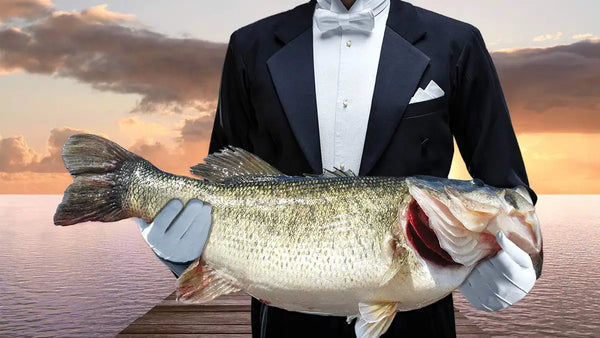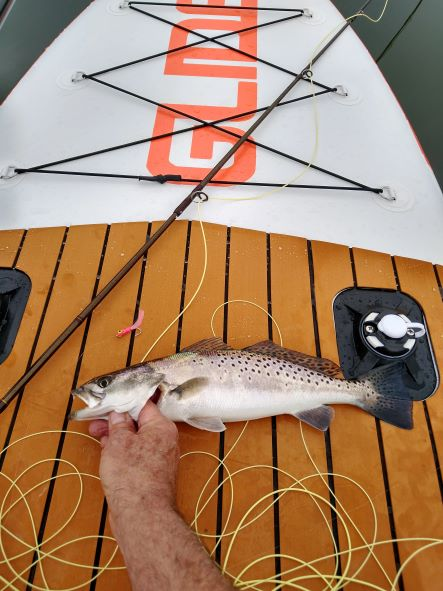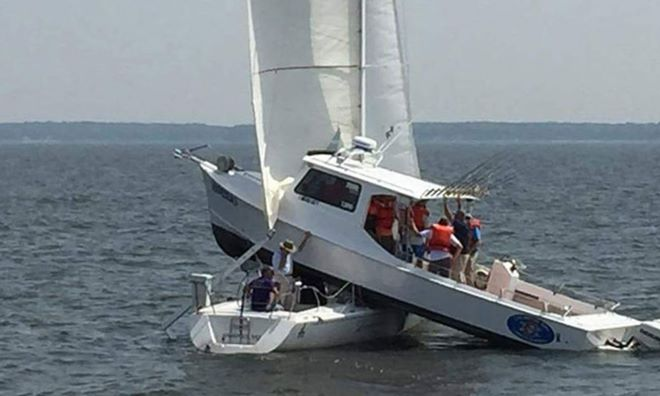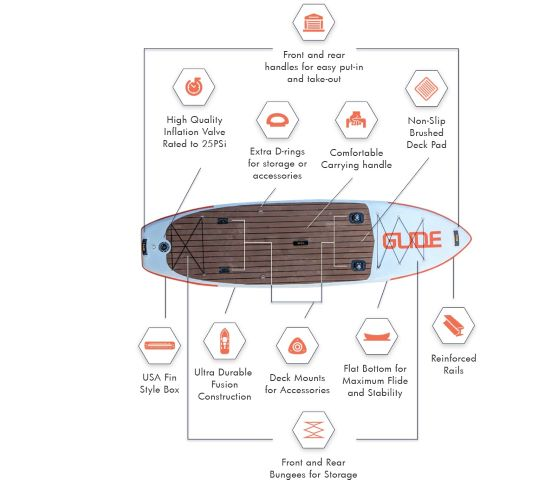
SUP Fishing Etiquette: Best Practices for a Safe and Respectful Experience.
Stand-up paddleboarding (SUP) fishing is a unique and exciting way to catch fish while enjoying the beauty of the great outdoors. However, with this combination of activities comes a need for proper etiquette to ensure that everyone can enjoy their time on the water safely and respectfully. In this article, we will cover everything you need to know about SUP fishing etiquette, from safety tips to common courtesy practices.
Key Highlights
- SUP Fishing Etiquette: Understanding the dos and don'ts is crucial for ensuring a safe, enjoyable experience for everyone on the water. This includes giving space to other anglers, yielding to larger watercraft, and adhering to local fishing regulations.
- Safety Guidelines: Always wear a personal flotation device, check weather and water conditions, and be aware of your limits and skill level to ensure safety while SUP fishing.
- Respecting Other Anglers and Watercrafts: Maintain a respectful distance from other anglers and yield to larger boats, promoting harmony on the water.
- Catch and Release Techniques: Employ barbless hooks, handle fish carefully, and revive them properly before release to support fish populations and ecosystem health.
- Environmental Stewardship: Emphasize the importance of leaving no trace, using eco-friendly gear, and supporting conservation efforts to protect natural resources for future generations.
Introduction: What is SUP Fishing Etiquette?

SUP fishing etiquette is a set of guidelines and practices that are essential for a safe and respectful experience on the water. As the popularity of SUP fishing continues to grow, it is important that anglers understand and follow proper etiquette to ensure that everyone can enjoy their time on the water. This includes being mindful of other anglers and watercraft, practicing safe and responsible catch and release techniques, and respecting our natural resources.
Safety First: Basic Safety Guidelines for SUP Fishing.
Safety should always be the top priority when it comes to SUP fishing. Here are some basic safety guidelines that every angler should follow:
Always Wear a Personal Floatation Device (PFD).
A PFD is a crucial piece of safety equipment that should be worn at all times while on the water. Even if you are a strong swimmer, unexpected accidents can happen, and a PFD can be the difference between life and death.
Check the Weather and Water Conditions Before Heading Out.
Before you head out for your SUP fishing adventure, make sure to check the weather and water conditions. Strong winds, choppy water, and lightning storms can all pose a significant safety risk, and it is important to be prepared for any potential hazards.
Know Your Limits and Skill Level.
SUP fishing can be physically demanding, and it is important to know your limits and skill level. If you are new to SUP fishing or are not a strong swimmer, it is recommended that you take a safety course or go out with an experienced guide.
Be Mindful of Your Surroundings: How to Respect Other Anglers and Watercrafts.
When you are out on the water, it is important to be mindful of other anglers and watercrafts to ensure that everyone can enjoy their time on the water. Here are some etiquette practices to follow:
Give Other Anglers Space.
When you are SUP fishing, it is important to give other anglers space. Avoid fishing too close to other anglers, as this can be intrusive and can make it difficult for them to cast their lines. If you do happen to cross paths with other anglers, be friendly and respectful.
Yield to Other Watercrafts.

SUPs are relatively small watercrafts, and it is important to yield to larger boats and watercrafts. When you see another watercraft, move to the side to let them pass. Always keep a safe distance and be aware of your surroundings.
Follow Fishing Regulations and Laws.
Make sure you know the local fishing regulations and laws before you head out on the water. These laws are in place to protect our natural resources and ensure that everyone can enjoy fishing safely and responsibly.
Proper Catch and Release Techniques: How to Handle Fish Safely and Responsibly.
Proper catch and release techniques are essential for the health and well-being of fish populations. Here are some tips for
Use Barbless Hooks.
Using barbless hooks is a great way to reduce the harm to fish during catch and release. Barbless hooks are easier to remove from a fish's mouth, which means less damage to their skin and tissues.
Handle Fish Carefully.
When handling fish, make sure to wet your hands first to prevent damaging their skin and scales. Avoid squeezing or gripping them too tightly, and support their body weight when lifting them out of the water. Try to keep handling time to a minimum, as extended exposure to air can be harmful to fish.
Revive Fish Before Releasing Them.
Before releasing a fish back into the water, make sure to revive it first. Hold the fish in the water facing upstream and move it back and forth to force water through its gills. This will help the fish recover from the stress of being caught and improve its chances of survival.
Environmental Stewardship: How to Protect Our Natural Resources.
As anglers, it is our responsibility to protect our natural resources and ensure that future generations can enjoy them as well. Here are some environmental stewardship practices to follow:
Leave No Trace.
When you are out on the water, make sure to leave no trace. This means packing out all your trash and leaving the area as you found it. Do not disturb or damage natural habitats, and respect wildlife.
Use Environmentally-Friendly Fishing Gear.
Choose fishing gear that is environmentally friendly and sustainable. Avoid using lead sinkers, which can be toxic to wildlife, and choose biodegradable bait and lures.
Support Conservation Efforts.
Support conservation efforts in your area by volunteering with local organizations or donating to conservation projects. Educate yourself on local environmental issues and take action to protect our natural resources.
FAQs.
-
Is SUP fishing safe? SUP fishing can be safe when proper safety guidelines are followed, such as wearing a PFD and checking the weather and water conditions before heading out.
-
Can I fish too close to other anglers? It is not recommended to fish too close to other anglers, as this can be intrusive and can make it difficult for them to cast their lines.
-
How can I handle fish safely and responsibly? Handle fish carefully by wetting your hands first, supporting their body weight, and reviving them before releasing them.
-
What can I do to protect the environment while SUP fishing? Use environmentally-friendly fishing gear, leave no trace, and support conservation efforts in your area.
-
Why is following SUP fishing etiquette important? Following SUP fishing etiquette is important to ensure a safe and respectful experience on the water, protect our natural resources, and promote sustainable fishing practices.
Conclusion: Summary of Key Points.
In summary, SUP fishing etiquette is essential for a safe and respectful experience on the water. Follow basic safety guidelines, be mindful of other anglers and watercrafts, practice proper catch and release techniques, and protect our natural resources. By following these guidelines and being a responsible angler, you can help ensure that everyone can enjoy SUP fishing for years to come.
Glide Paddle Boards SUP Fishing Tips.

Paddle board fishing a comprehensive guide.
The Glide O2 Angler. Fishing sup board perfect for your next fishing adventure. Glide makes the right paddle board for all your paddle boarding adventures.

Glide beginners tips to sup fishing.
SUP fly fishing tips for trout.
Landing fish while SUP fishing: Tips and techniques.
Best SUP Fishing Knots: Tips, Tricks, and Techniques for Every Angler.
Paddleboard fishing, can you fish from a sup?
Good luck and happy fishing! Let us know about your latest sup fishing adventure at #glidesup on Instagram.


